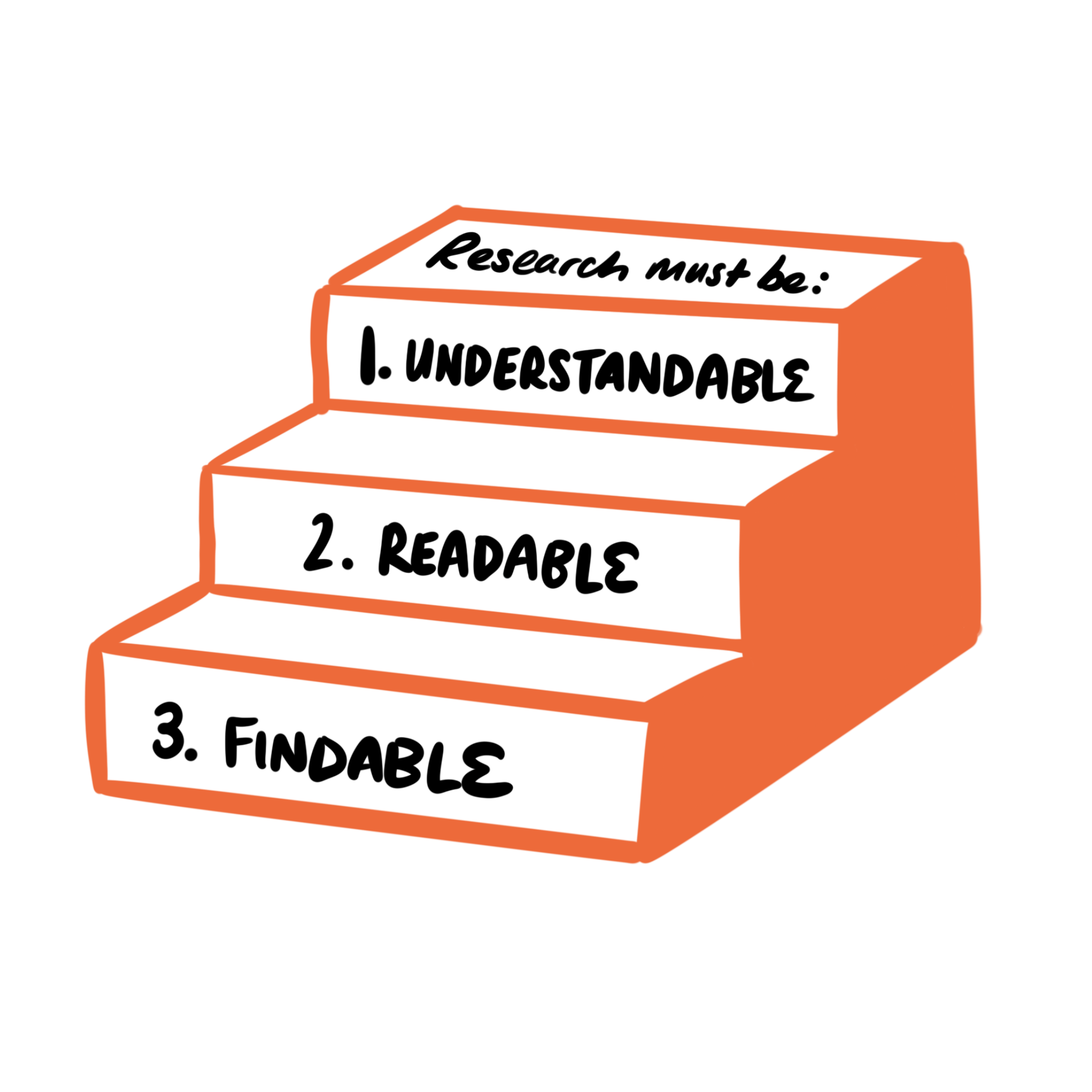Making research accessible means making your work:
- understandable
- readable
- and findable
for audiences outside the academy.

How can we expect audiences to use our knowledge - and drive routes to impact - if we don’t communicate it clearly!?
THE PROBLEM
Why most research communication is not accessible - the curse of expertise!
The CURSE OF EXPERTISE means that you have so much knowledge in your field of research that you have forgotten what it is like to be a mere mortal - a novice!
It makes research inaccessible in three key ways:
-
You use language, concepts and frameworks that non-experts would find hard to understand (and perhaps some other experts too!). And you don’t even realise you are doing it.
-
You present your research in traditionally academic ways that compound this problem. Think wordy reports, death by PowerPoint slides, and conversations where words are 5 syllables or more! You might not take into consideration different learning styles, abilities to engage with that knowledge, or diverse communities.
-
You struggle to relate your ideas to the real world - big problems that your audience care about.

At the heart of all this is one core problem:
You have forgotten the needs of your audience.
Presenting your research is NOT about you (although it does feel like you are putting your soul on trial!) - it is about how you serve an audience with the knowledge and insights from your work to drive measurable change.
THE SOLUTION - challenge the curse of expertise
Step 1 - Make it understandable
Use plain English and storytelling to relate YOUR THING to THEIR THING
‘You’re not simplifying the science, you are simplifying the expression of it’
First, stop to consider your audience. Who are you trying to influence? What do they care about? What information do they need to believe, understand or do something differently?
Then consider how to explain what you do in plain English.
- How does your research relate to something that your audience already knows about?
- Use metaphors and stories to juxtapose the known to your unknown to help understanding. Not sure how to do that? Our free ReStory Framework will help!
- Use PLAIN ENGLISH. Research has shown that speaking plainly makes you seem MORE not less of an expert. As renowned imposter syndrome expert Dr Valerie Young says: ‘…if more experts communicated with the goal of making their work accessible to a larger population, everyone, including you, would feel a lot smarter - and be more informed’. Use this great resource from Washington University on writing in plain language for academics.
- Use Readable to help you do this - we use it for all of our scripts and content for clients to check it's accessible.
Step 2 - Make it readable
Use visual, accessible ways of presenting your information
- Using lots of words is not the only way to share information
- Visuals make research quicker and easier to understand, more memorable and also more likely to evoke emotional response for change (see all the science here).
- Consider using infographics (learn how to make your own), animation, podcasts or even just better powerpoint slides to communicate your work
- Consider accessibility - alt text, captions, colour contrast, culturally specific visuals, and font choice all matter. Don't be afraid to ask for help and work WITH audiences to tweak and get it right. AbilityNet is a great resource to support you.
Step 3 - Make it findable
Plan where, when and how you will present this information
- You can’t just say it once! For research to be accessible it also has to be VISIBLE and easy to find your work.
- Open Research - does your institution have a way to make your data and journal articles open access? Contact your university library to find out.
- Use social media - if that feels overwhelming, take a look at our Adapting Research for Social Media guide.
- Public engagement - work with your impact and engagement teams to spread the word about your work.
The happily ever after if you follow these four steps...
- Research that is useable beyond the ivory tower.
- Research put into the hands of the communities that it affects. From funders and policy makers, to businesses, healthcare and local communities.
- Research that drives positive change.
Need some help to do that?
We are experts in making research understandable and actionable for diverse communities. We’ve worked with over 50 universities, 80+ public sector organisations and nearly 3000 researchers across 6 continents since 2017. We can help you to make the complex simple, engage audiences and drive change. Worth a chat? Get in touch.
View All Blogs








